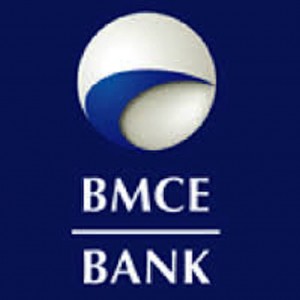CPI FINANCIAL
by Matthew Amlôt
Capital Intelligence Ratings (CI Ratings or CI), the international credit rating agency, today announced that it has affirmed the ratings of BMCE Bank, based in Casablanca, Morocco.
BMCE’s Financial Strength Rating (FSR) is maintained at ‘BBB-’, supported by steady profitability in 2015, the increased market share of customer deposits, and adequate liquidity overall.
The FSR remains constrained by the increase in non-performing loans (NPLs), the low level of free capital, and modest operating profit returns. The Outlook for the FSR is affirmed at ‘Stable’. The FSR could come under downward pressure if loan asset quality or capital adequacy weaken. BMCE’s Long- and Short-Term Foreign Currency Ratings (FCRs) are affirmed at ‘BBB-’ and ‘A3’ respectively, with a ‘Stable’ Outlook.
The FCRs are constrained by CI’s internal assessment of sovereign credit risk. The Support Rating is maintained at ‘2′, reflecting the Bank’s franchise, important market share of customer deposits, and likely support from BMCE’s shareholders initially – and from the Central Bank.
BMCE holds a solid banking position in the Moroccan banking sector, controlling a significant share of sector assets, deposits, and loans. It ranks the third largest bank for loans and customer deposits in Morocco. BMCE’s profitability performance was again steady in 2015 on the back of higher net interest income. However, operating profit was squeezed as gross income growth was subdued and operating expenses increased at a faster rate. Aiding the bottom line was a slightly lower cost of risk.
This nonetheless remains high, particularly against operating profit. BMCE’s returns were stable in 2015. The Bank’s return on equity has improved over the years but its return on assets is slightly below peer banks. This is due to a low yield on its earning assets, and the high provision charge.
There continues to be challenges in respect to loan asset quality but nonetheless the NPL ratio is slightly better than the peer average. Loan-loss provisioning has also improved but effective coverage remains low. The latter is due to a very modest level of free capital. The capital adequacy position exceeds regulatory standards but in CI’s view additional capital is needed to further support the balance sheet.
Loan-based liquidity ratios are adequate and customer deposits grew at a much faster rate than the sector in 2015. However, so did the loan book. Liquid assets were higher and at a reasonable level but net liquid assets are low. Mitigating this somewhat is a reasonable level of marketable securities which boosts quasi-liquid assets.








